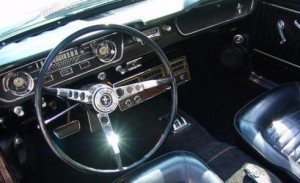Adding 134A to Car’s A/C – Topping Off a System
June 9, 2014 7:52 am Air ConditioningCharging up a car’s A/C system by adding 134A will make it blow cold, won’t it? Sometimes is the correct answer. With some luck this might be just the ticket. But without knowing the gauge readings, topping off a system is just a guess. One of the most common causes of a car’s A/C not cooling is low refrigerant so there is actually a good chance that adding refrigerant is needed.
The issue is that topping off a system with Freon without knowing what the AC gauge readings are, can be a little like playing piñata. There’s a nice prize to be won, but swinging blindly may not work, in fact there might even be some damage done before it’s all over. What if the issue with the AC isn’t a low charge? By using A/C gauges to see the low and high side readings the blindfold is taken off! Just so there’s no doubt in what I’m saying; adding refrigerant into a car without knowing the capacity, how much is already in the system or even knowing what the pressures are is NOT recommended. Using a cheap can tap from a parts store or Walmart that doesn’t have a gauge, can possibly cause damage to the car’s AC system. Adding too much 134A can damage the compressor and adding stop leak that’s included in some of the DIY Freon charging kits can restrict flow in any of the AC parts, like the compressor, evaporator, condenser, drier, expansion valve or suction and discharge lines.
Using a 134A gauge set and viewing the high and low side readings will not only help to prevent over-charging, the readings can show if there are any underlying problems. It’s the only professional method to check an A/C system and top it off if needed. It’s important when the readings are obtained that a person has an idea of what they should be. Normal gauge readings, high readings, low readings all indicate different things. Knowing which service ports to hook up the AC gauge fittings to isn’t a problem on a 134A system. The high and low side service ports on the car are different sizes and cannot be hooked up backwards. It’s only safe however to charge using the low side, it is designated by the blue color. When a system is gauged and found to be low, the source tank or can of 134A is hooked into the yellow hose and the blue knob on the A/C gauge set will be opened allowing 134A to flow into the car’s A/C system. When normal readings are reached and cold air is blowing out of the vents the job is complete.
- It’s common for car A/C systems to have a very slow loss of 134A over time.
- If the system loses it’s charge fast, a leak detector will most likely be needed to find the leak.
- Some cars come with UV (Ultra Violet Dye) in their system, so using a black light may help to find leaks.
An interesting bit of car A/C trivia
- In 1981 a can of Freon (R12) was commonly called a pound of Freon although it had been downsized from 16 ounces to 14.
- In 1981 Western Auto (where I worked at that time) sold cans of refrigerant for $.99 – so topping off a system wasn’t that costly.
- In the 1980’s some A/C systems held three to four pounds of Freon – compared with today’s cars that typically hold 20 to 28 ounces.
- Even though the most common refrigerant today is 134A instead of R-12, the downsizing continues. Freon at the time this article was written a 12.3 oz. can costs $11.99 at a Tampa AutoZone.
Like I said before it’s best to know what the A/C gauge readings mean in order to add the right amount of Freon to the car’s A/C without causing harm to the system. Learn about car A/C gauge readings to know what normal readings are and to help diagnose AC problems. With the correct tools and a little knowledge of what to look for, ice cold air can be coming out of the vents in no time!

calvin :
Date: October 26, 2014 @ 11:40 pm
I have a 65 mustang with under dash unit. I am using the original condenser and evaporator new hoses custom fit and a Sanden type compressor new dryer and check valve converted to 134a. My question is how do I know when I have enough freon in the system? I just charged the system with 24 oz and it is blowing cold air but the gauge on the low side is only at 15 lbs and the high side is at 200. I contacted a well known ac manufacturer for classic cars and got two different answers. One said 20 oz and there website said 24. This is however for there new units with modern day condensers and evaporators. I feel like I need to add more but not wanting to take the risk unless I can trust what the gauge means. P’S the out side temp was at 80 degrees.
dennisb - Auto Tool Sales :
Date: November 4, 2014 @ 7:49 am
Calvin, generally 134A runs at higher pressures. At 2,000 RPM’s, Blower speed on high, outside temp at 80 Degrees F, I’d expect the low side to be around 30 and the high side to be around 250. The vent temp if an max should be in the fifties. I wouldn’t expect a vent temp in the 40’s since it’s a retrofit. Good Luck.